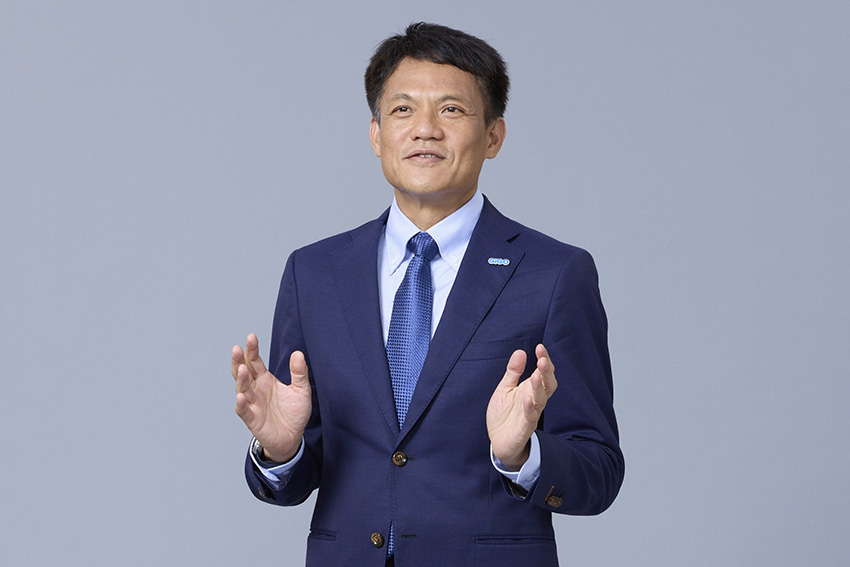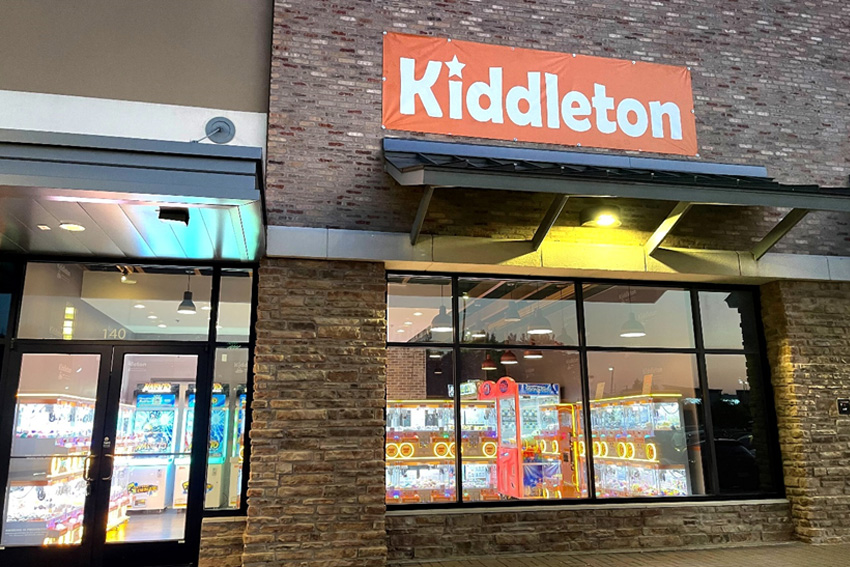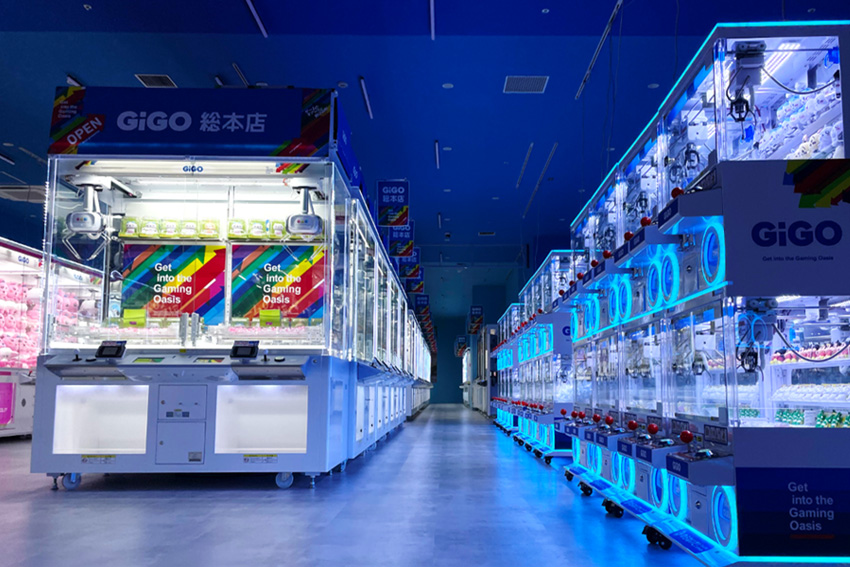GENDA GiGO Entertainment aims to bring smiles to faces, no matter the age, through its various businesses and services.

Japanese entertainment is now an industry that rivals other key sectors like semiconductors. How would you define the uniqueness of Japanese entertainment?
In Japanese anime, the sensitivity and sensibility of Japanese people, which are very unique to us, are very well expressed and even the government is strongly promoting Japanese anime. I believe that this culture is quite unique to Japan and most likely, it will keep expanding to the world.
As you said that 33% of global anime distribution is now through streaming services such as Netflix, I think that Covid-19 pandemic acted as a trigger to expand such trend to the world. Even in Japan, anime used to be considered more for otaku, or what you might call geeks, and broadcasted midnight, for example, around 2am. However, subscription services were getting more popular in Japan during the pandemic and now you can watch anime anytime and anywhere you want. This has become an infrastructure which really supports anime in a strong way. Besides, this happened not only in Japan but also worldwide. I think that the rapid increase in volume of distribution in the world strongly boosted Japanese anime and IP industry.
There are some challenges that have led to over 8,000 arcade closures over the past ten years. Despite this, you’ve leaned heavily into arcades. You have over 350 in this country alone. Your flagships are in Tokyo and Osaka, and just last month, you announced to acquire seven more from DORAMA Co., Ltd. How have you been able to overcome these challenges, and what is your vision in terms of the number of arcades you want to have by the end of the decade?
It is a fact that the number of amusement arcades is decreasing. However, the market itself has been growing even before the pandemic, since around 2014. Although it shrank once during the pandemic, it has been expanding about 5 or 6% in Japan. As one of the leading companies in this industry, we are actively acquiring and refurbishing locations through M&A activity. With the ability to cater to more of the mass amusement market, we can work together with the manufacturers of prizes for these entertainment facilities to provide a good cost performance in providing entertainment experience.
Japanese entertainment is a global phenomenon, but it’s not something that is exempt from population crisis. 20% of Japanese people describe themselves as devoted otaku, but that is not enough to combat the fact that the Japanese population is expected to decline by half by the end of the century. This presents a triple challenge. The first one is a shrinking audience. The second one is the reduced creators. The third is the limits on investment opportunities. How much is internationalization a key pillar of your policy to combat the population crisis?
Unfortunately, I think that it is true that the population of Japan will decrease in future. However, what is interesting about the amusement arcade industry in Japan is that even each of the top players only has about 10% of the market share. I believe that there is a good opportunity for us to grow our share more in Japan. As Japanese IP is expanding in the world, I think that being good in operation in Japan, which means having a strong ability to negotiate with Japanese manufacturers, will be the source of strength.
Looking at overseas based on that idea, North America is really attractive with its market size and growing population and that was why we decided to invest there. Kiddleton, which is our subsidiary there, recently acquired National Entertainment Network (NEN) to gain access to significant US local entertainment facilities.
NEN is a very recent acquisition with 8,000 locations. Can you tell us about the post-acquisition strategy?
In the US, Kiddleton has deployed mini-locations (non-staffed gaming corners) by themselves for the past two and a half years. We started by establishing one store, then kept expanding. After two and a half years, we now have about 600 stores. With the recent acquisition of NEN, we got over 8,000 mini-locations. Now we are converting them to our Kiddleton style using a Japanese kawaii (cute) IP to attract local customers. By doing that, we have seen some stores increase their sales much more than expected. I believe that there is still a high potential in this approach, which we are still in the midst of carrying out.

Kiddleton
I saw that in a previous interview, you said that you had a dream of having your own arcade in New York. Sticking to the theme of internationalization, you established your first Southeast Asia presence in Vietnam, and you are also in Taiwan. Beyond America, which countries have you earmarked for future potential expansion?
Our current overseas focus is North America and mainly the US market. However, Southeast Asia is also a very attractive market with its growing population and the age composition. That was why we expanded to Vietnam and Taiwan recently. Therefore, I think that there is still enough room to consider expanding more in Southeast Asia, although we do not have any specific plan at this moment.
What would that strategy look like? Would you rely on partnerships or mergers and acquisitions?
We launched business with the direct management in Vietnam, while we expanded into Taiwan through M&A. Reflecting on these two experiences, I think that it is our strength to conduct M&A and the advantage is bigger in many points. Of course, it may not always go well because you have a counterpart in M&A, but basically, I would like to consider expanding in that way.
Since your founding, you have transformed into a leader in amusement and online gaming. GENDA has three values that define your vision, namely, "Speed is King," "GRIT and GRIT" and "Enjoy our Journey." How do these GENDA values help to build the key strengths that have built your company into what it is today?
All three values are very important in our company, but “Speed is King” is the most important value not only for GiGO but also for GENDA. Since the entertainment industry is very volatile and it is more difficult to predict what will happen next than other industries, basically, I think that it is much better to take action fast in this industry, rather than analyzing too much before taking action. We aim to become the world’s number one company in the entertainment industry. To achieve this goal, we place the most importance on taking quick action despite everything.
Looking at your business segments, you have vibrant amusement arcades with crane games and retro games, an online presence with GiGO Online Crane and GiGO Mall, theme cafes, family play zones, e-sports, and merchandise items. Are there any new segments you would like to break into?
I think that most probably crane games will keep growing steadily. However, I am fully aware of the risk of relying on one dominant business. Therefore, we have been working enthusiastically to add new contents. For example, in addition to the ones you have just mentioned, amusement poker, since gambling is prohibited by laws in Japan. Our target is mostly Generation Z, young people. We would like to provide a location where they can spend their whole day enjoying different types of entertainment in our store, all in one arcade, by adding new contents which will intrigue them.

GiGO Sohonten crane game
Looking at the digital side of your business, you have Machi no Coin, which is a community-based digital currency. You also have BEMANI PRO LEAGUE, which shows your commitment to competitive e-sports. You have GiGO app as well, which enriches users’ experiences by seamlessly connecting fans to their favorite entertainment locations. Are you going to expand these local and digital offerings internationally?
Our primary focus is GiGO app. In Japan, the amusement industry lags behind compared to the retail business in terms of gathering and usage of customer data. We believe that we should deal with this issue and have been developing GiGO app aggressively. Last month, the number of users exceeded one million. We have built a system that gathers all big data. Now we focus on developing a structure to analyze the data and be able to make recommendations to customers. I hope to expand this structure overseas as well in future.
You are a wholly owned subsidiary of GENDA. What are the strengths you’re able to leverage from this?
The dominant synergy and the advantage that we receive by being part of GENDA is that GENDA has both financial and tech professionals. First, GENDA’s tech team consists of 80 members including engineers, designers and marketers and we can make a development with amazing speed. We can really make a development by ourselves without outsourcing. It is one of the advantages that we can utilize the resources. Besides, since our strategy is to grow through M&A, their financial expertise and advice really drive our business forward. Recently, we have been stressing the acquisition of amusement arcades. However, GENDA also pursues new contents and business opportunities such as sales and rental of karaoke equipment and related products, as well as acquisition of game prize manufacturing companies. Having all the companies within our group helps to create synergy and drives new entertainment development.
When you mentioned your GiGO app having over 1 million customers, it got me thinking about the traditional arcade experiences, where you go in, put a bill into a machine, get a bunch of coins, and go play games. In terms of adopting digital tools, how do you see technology revolutionizing the payment method for amusement facilities?
I know that we should shift to digital payment immediately, if possible. However, I think that we should do that at a right timing, watching carefully not only amusement arcades but also the whole Japanese society. We need to develop a system which will not give any stress in our customers’ experiences and now we are strengthening this development. Towards that goal, for example, we are developing a system that a customer can play crane games immediately by touching the machine with GiGO app.
You talked about the importance of M&A to your company. Two other notable acquisitions are PLABI, an entertainment facility company, and SANDAI, which is focused on entertainment management. What are your strategies behind these acquisitions?
It is true that each company has its own strengths. As I mentioned earlier, in the Japanese amusement arcade industry in which each top player has only 10% of the market share, there is a characteristic that increasing the purchasing power by increasing the number is conducive to a stronger ability to negotiate with manufacturers. I think that it is a very important strategy to make an approach first and then make companies which are interested in working with us turn toward us. Currently, it is one of particularly important strategies to treat the number as a platform, regardless of the size.
You collaborated with Fuji Kyuko to debut a VR-powered GiGO facility. You’ve also collaborated with iconic franchises like Sanrio and A3, and you even co-branded novelty drinks with FC Imabari. Can you tell us about any upcoming collaborations?
We are constantly seeking and are open to new collaborations. For example, in collaboration with Fuji Kyuko, we aim to grow our presence for inbound visitors to Japan while exploring future opportunities together. The collaboration with FC Imabari is more of a social contribution. We would like to grow GiGO’s presence by supporting FC Imabari with the local community. I truly think that there are so many types of collaboration. We are also interested in new collaborations to enhance the possibilities of entertainment. Last summer, we had a really successful collaboration with a K-pop group. I believe that we should keep developing such collaborations to expand our potential and increase the value of entertainment. We would like to explore many ways for collaboration.
Both domestically and internationally?
We have many of those collaborations in Japan at present. However, with the acquisition of 8,000 locations across the US, I think that now it is possible to expand all at once. There are many IP holders interested in expanding their Japanese IP in the US, and especially after IPO, more IP holders believe that our platform is very valuable. I cannot say anything specific at this moment, but making collaborations with IP holders worldwide is the next thing that we have in mind.
You were founded in 2021 and have had exponential growth. Please imagine we will come back to interview you again in 2031 for your ten-year anniversary. What would you be happy with in terms of growth and achievements by then?
Currently, we are the third largest player in the industry. For the next fiscal year, now we are close to becoming No.1 in the amusement industry in Japan. Besides, since GENDA is expanding the range of various entertainment, as I explained earlier, I would like to create a one-stop entertainment facility where people can spend their whole day enjoying a diverse range of entertainment, in one of the hottest spots in Tokyo no later than 2028. After the success in that, I would like to bring that to the US in 2029. By that time, GiGO will be a global brand known for its versatile entertainment.
For more information, please visit their website at: https://www.gendagigo.jp/
0 COMMENTS